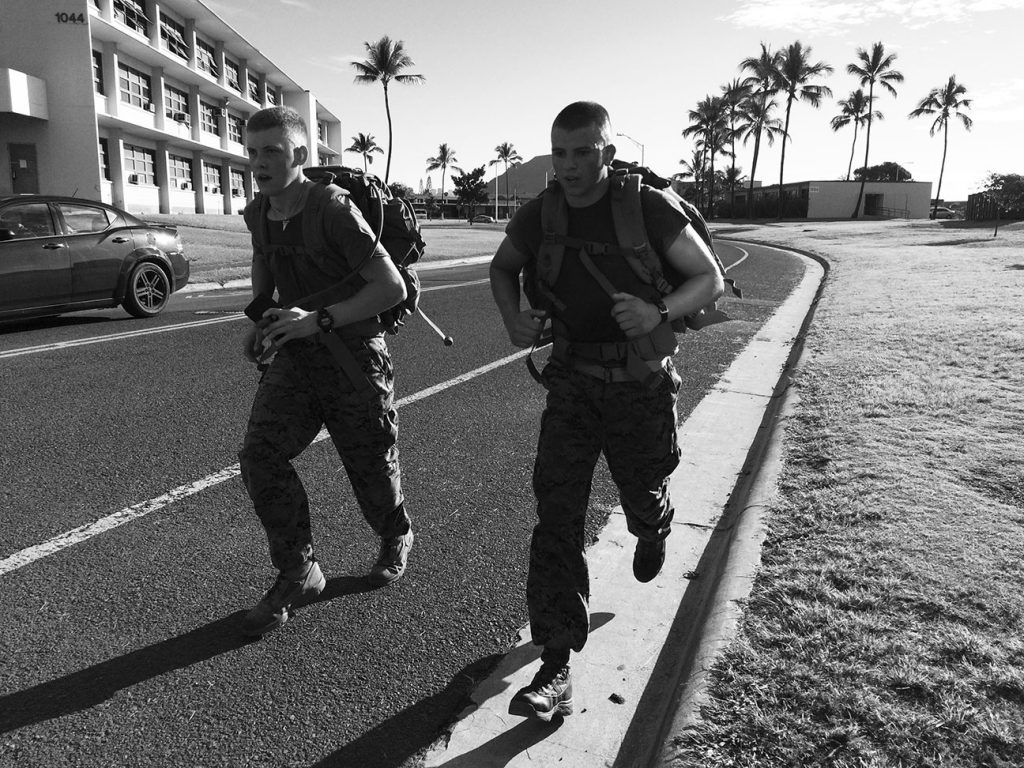
By Rob Shaul
I came to endurance programming embarrassingly late in my theory development. When I first started what was then, Mountain Athlete, I was captivated by the shiny, sexy object of gym-based strength and work capacity training. My endurance programming consisted of “run 5 miles” on the weekend.
This was one of my major early programming mistakes and it smacked me in the face as my athletes reported endurance weakness on their mountain days.
Endurance Only Programming vs. Multi-Modal Programming
We work hard not to reinvent the wheel at MTI, so when we realized our endurance programming deficit, the first thing we did was buy all the best endurance training books we could and start reading.
We quickly saw that the endurance-only fitness programming for triathletes, marathoners, and road cyclists would not work with the multi-modal fitness demands of our mountain professional and tactical athletes.
Simply put, traditional endurance programming for pure endurance athletes with its linear “base”, “build” and “peak” phases aimed at a specific race didn’t align with the numerous seasons for our multi-sport mountain athletes or the burden of constant fitness for our tactical athletes.
As well, the time traditional endurance training allotted to endurance work left little to no time for us to program the strength, work capacity, and chassis integrity fitness training our athletes also needed.
Two things we did learn from the endurance coaches was to primarily focus endurance training in two areas: (1) short and fast, and (2) long and slow. It’s best to minimize moderate distance at a moderate pace, endurance work.
We also learned the value of sport-specificity in terms of programming. There is little transfer from one endurance mode to the other. So don’t swim and expect it to improve your running. Don’t run and expect it to improve your rucking. Don’t bike and expect it to improve your uphill hiking under load. Deploy your endurance training in the same mode you’re trying to develop.
The Efficiency Problem and the Assessment Breakthrough
The efficiency problem arose as we tried to program endurance work in our “base fitness” cycles for mountain and tactical athletes. With the need to train relative strength, work capacity, chassis integrity, climbing fitness (mountain), and tactical agility (tactical), little room is left to squeeze in endurance work.
From the endurance coaches, we learned which endurance programming we needed to deploy emphasize either the short and fast, or long and slow efforts, as well as be mode-specific.
Initially, we simply prescribed distances and paces for athletes to follow. But when deploying this with our own lab rats, it simply was not specific enough to the individual athletes. Some athletes, natural endurance athletes, would not be pushed by the prescribed pacing.
Others, small-lunged soles like me, would suffer attempting the prescribed paces, and often fall short.
Our answer to this problem was an initial assessment. If you’ve followed any of MTI’s base fitness programming, you’ve likely completed a 3 mile run for time, 6-mile ruck for time, 30 minute step up effort for reps, or something similar, the first week of training.
This initial endurance assessment allowed us to “scale” the short/fast effort, and long/slow programming paces for the individual athlete.
Initially, when we deployed this programming we would publish charts with the individual programs, but soon developed our own calculators to make it more simple.
We currently have 3 endurance calculators:
Once the athlete completes the assessment, he/she can enter the assessment distance and his/her finish time, and the calculator will spit out short distance interval pacing, and long, easy distance pacing. In this way, our endurance programming automatically “scales” to the incoming endurance fitness of each athlete.
Progressing Endurance in a Base Fitness Cycle
In general, MTI’s short intervals are 1/3 the assessment distance and paced 20% faster than the assessment pace.
MTI’s long/slow efforts are prescribed to be 10-50% further than the assessment distance, and 20% slower than the assessment pace.
For example, Week 1 in the plan calls for a 3-mile run assessment, and the athlete finishes in 30 minutes, for a 10 min/mile pace.
We’d program endurance two days a week, Tuesdays and Fridays.
Tuesday is short/fast work. Specifically, 1-mile intervals (1/3 the assessment distance) at a prescribed 8 min/mile pace (20% faster than the 10 min/mile assessment pace).
Friday is long/slow work, beginning with a 4-mile run (33% further than the assessment distance) at a 12 min/mile pace (20% slower than the assessment pace).
Mid-cycle, we usually program in a re-assessment and then using the appropriate endurance calculator, re-calculate the following paces. Usually the athlete will run the assessment faster the second time, and subsequently, the calculator will spit out faster pacing for the follow-on intervals and long efforts – so he’s continued to be pushed.
Below is an example of a 7-week cycle where we deploy this type of programming in a base fitness cycle:

Over the years, we’ve found this endurance programming approach really effective at increasing endurance fitness in a multi-modal base fitness cycle.
We do have sport-specific, endurance only training plans which deploy more traditional endurance programming, but must still include at least short/fast, intervals based on the run, ruck, or swim calculator.
As well, sometimes we’ll move away from calculator-based pacing, simply to give the athlete a break from that model.
Questions, Comments, Feedback? Email rob@mtntactical.com
You Might Also Like Gym Based, Multi-Modal Endurance for Mountain & Tactical Athletes
